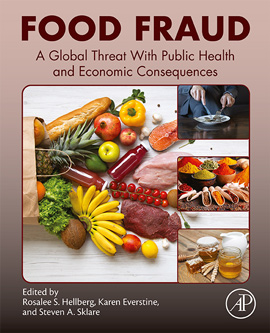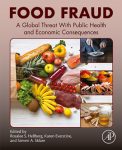The coronavirus pandemic has impacted the food industry on several fronts from production to consumer purchasing habits to in-restaurant dining adjustments. While facility operations might look different, the demand for product is certainly still high, so operations should be tighter than ever.
Unfortunately, pest activity has not slowed down during the pandemic. From rodents and cockroaches to stored product pests and birds, your facility is susceptible to pest disruptions. With shipments coming and going and limited staffing, it’s also highly likely you don’t have time to prioritize your pest management program. An unchecked, contaminated shipment leaving your facility and making it into the homes of consumers is all it takes to wreak havoc on your business.

If you already have an integrated pest management (IPM) program in place, you’re heading in the right direction with securing your facility. IPM programs help food processing facilities keep pests from entering and destroying your product by applying preventive measures such as identifying potential and existing sanitation opportunities and regularly evaluating the state of facility maintenance.
The last thing you need right now is a failed audit due to preventable pest issues. Failing a first, second or third-party audit can lead to many consequences such as a damaged reputation, reduced profits and worst of all, lost customers. With most regulators resuming on-site audits, offering remote options or a hybrid of the two, ensuring your facility stays within regulations is still possible, and highly encouraged. After all, pest control plays a significant role in all major food safety audits and can account for up to 20% of your score.
Food Safety Audits during the Pandemic and New Changes
Not only do facility managers have to regulate operations during a pandemic, but they also must maintain strict food safety standards to ensure that the food supply chain stays healthy. With the arrival of COVID-19 vaccines, there is some hope that the pandemic may be under control soon, but it is not over yet, and food safety audits should not be avoided because of a pandemic. To accommodate, many auditors implemented new measures such as remote and hybrid audits for food processing facilities, in addition to on-site audits.
If your facility is still unable to conduct on-site audits at this time, special accommodations can be made. The following auditors have made updates to their food safety audits amid the pandemic:
- BRCGS: In addition to blended audits, BRCGS is offering certificate extensions for up to six months with a risk assessment and review. Although not benchmarked by GFSI, remote assessments are also available and involve a video audit of your facility’s storage and production areas in additional to reviewing internal audit results and documentation.
- SQFI: SQFI is postponing certifications for extenuating circumstances and implemented additional processes for risk assessments. Certifying bodies will have to conduct risk assessments to determine whether a certificate extension is needed.
- FDA: After temporarily suspending all facility inspections last March, the FDA has resumed domestic inspections on a case-by-case basis when safe to execute. Foreign inspections have not yet resumed so, take extra care if your facility regularly receives foreign shipments.
- FSIS: Inspections of meat, poultry and egg facilities continued through the pandemic. These regulated facilities continue to require sanitation SOPs to help maintain food safety and prevent the spread of diseases.
Whether your facility is able to resume onsite audits or needs to switch to a remote or hybrid option, pests will still be trying to take advantage. Working with your pest control provider to ensure your documentation and pest management measures are in order is one of the best ways to ensure any audit or risk assessment goes smoothly. While each auditor has specific requirements, here are some key considerations for your next third-party inspection.
Implement an IPM Program
We cannot stress enough the importance of a proactive pest management program for food processing facilities. The best way to reduce pest issues is to build them out. Your pest control partner will identify and communicate to you on ways to reduce, or in some cases even eliminate food, water and harborage for pests. Ensure your contract specifies the roles and responsibilities of your pest control partner and you, the scope of service and a risk assessment plan. If you’re unsure of what your contract entails, now is the time to get in touch with your pest control partner.
Invest in Your Employees
Train your staff to spot and record signs of pest activity so you can address them immediately with your pest control partner. This is particularly important if you had to adjust employee schedules during the pandemic to enforce proper social distancing. Fewer staff means fewer opportunities to spot pest issues, so making sure all employees are trained can help you in the long run.
Keep Up with Documentation
Your documentation is an integral part of your audit process because it shows third-party auditors that you can verify that you have an effective pest management plan in place. Three types of documents are needed for your audit: Proof of training and certification, pesticide documentation and general facility documentation. Most pest control providers now maintain digital documentation for their partners which makes it easier to track and monitor for pest trends, treatments and updates to your plan. Even with a proper pest management program in place, facilities can still lose points for not having proper documentation so don’t overlook this part.
Hold Practice Runs
A good pest control partner will encourage test audits to ensure you’re prepared for the real deal. An annual assessment is one of the best ways to make sure your pest management program is still working and to address any gaps if it isn’t. Don’t forget to review your documentation during test audits in addition to joining your pest control partner for a physical inspection of your facility (socially distanced, of course).
Prepare your Facility
Your goal, and the goal of your pest control partner, should be that your facility is ready for an audit at any time. However, if you have an upcoming scheduled audit, a week before your audit, work with your pest control partner to conduct interior and exterior inspections as well as a documents review. Make sure you are familiar with how to access your customer web portal so that you can access data if requested. During these inspections, make sure any monitoring devices meet auditor requirements and are properly placed and maintained. The day before your audit, make another run through the facility to be sure your facility is ready. You don’t want your auditor finding cobwebs in your storage room or debris showing up in the background of a video audit.
Food safety should be a top priority for your business—your reputation depends on it after all. As the food industry continues to navigate operating in a post-pandemic climate, maintaining a successful pest management program and updated records will give you a head start when it comes to audits no matter the format. With public health concerns at an all-time high, consumers and suppliers alike will be grateful for your increased attention to maintaining industry regulations.





















